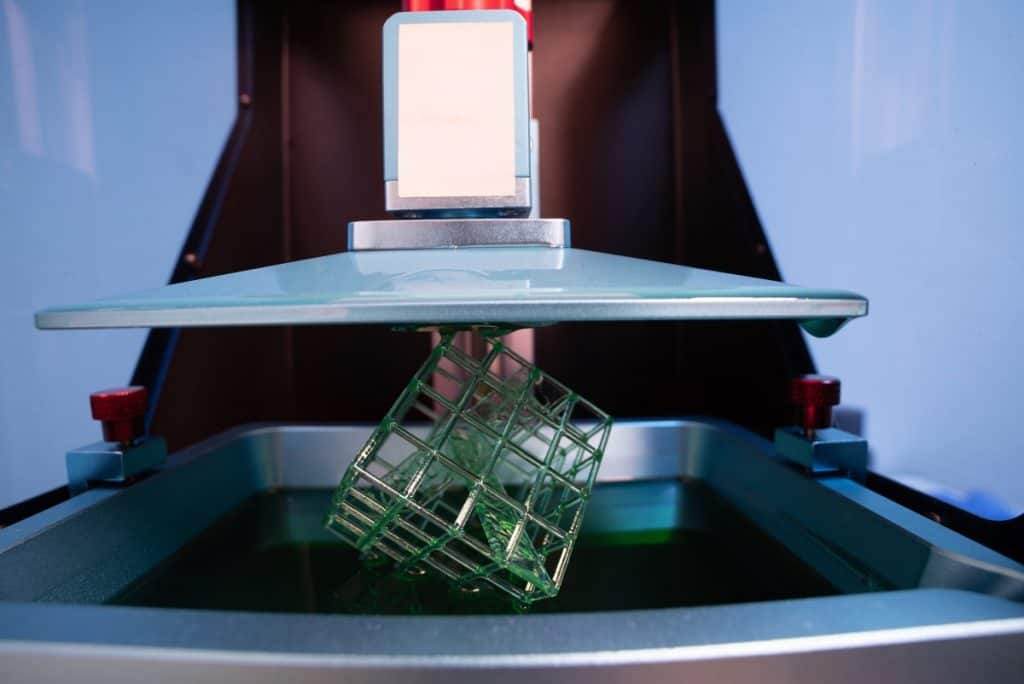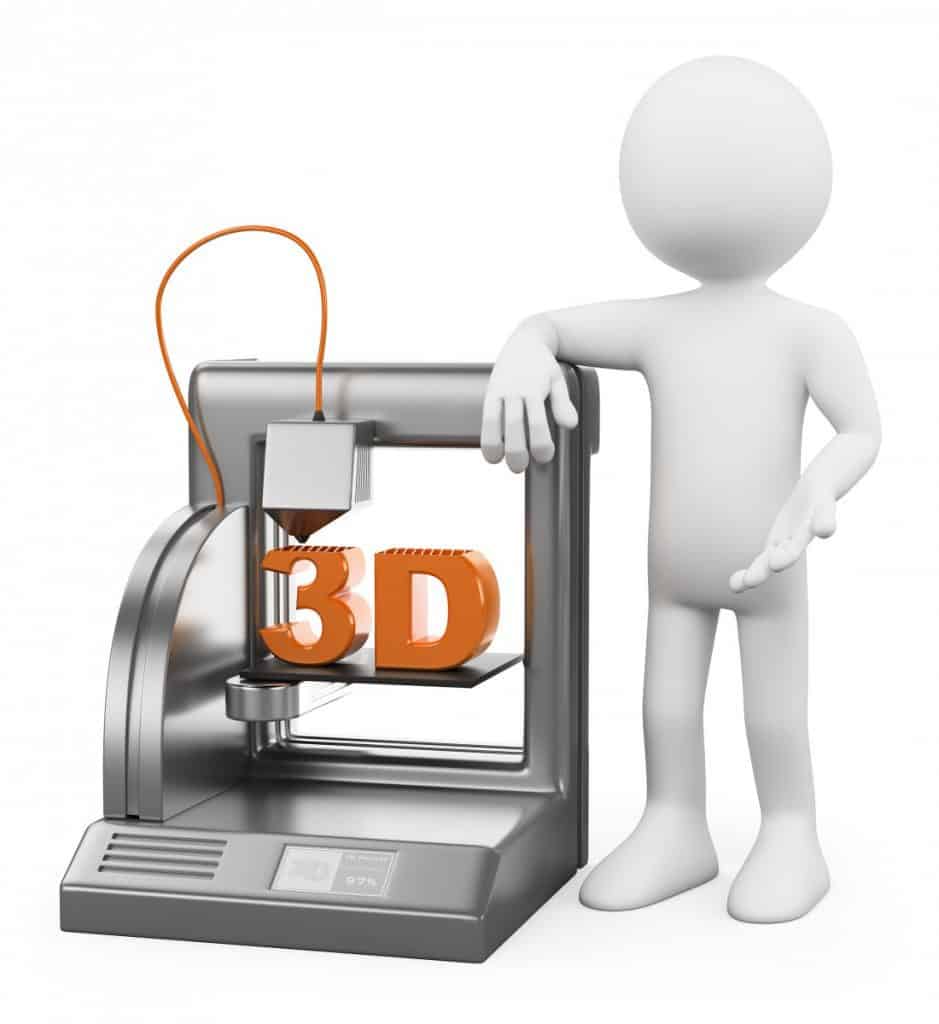Imagine a world where you can send someone your recipe via email, they load the ingredients into their 3D food printer, push a button, and have your food print for them exactly how you designed it, to the exact calorie. Here’s the kicker, people are already doing this.
Yes, you can 3D print food with specialized 3D food printers. Normal 3D printers can print food using a food-grade extruder upgrade. Most 3D food printing comprises chocolate, cookie dough, and other desserts but fully cooked meals with ingredients like meat and pasta are also becoming a reality.

In 2006, students at Cornell University experimented with 3D food printing by printing different 3D designs out of chocolate, cookie dough and cheese.
In the same year, Evil Mad Scientist Laboratories developed a printer that can melt and fuse sugar grains together to create 3D sugar sculptures.
Biozoon GmbH used 3D printing to print food that’s soft to chew and easy to swallow. They started building their machine called PERFORMANCE in 2012 and finished in 2015. The soft food is primarily sold to seniors with dental issues.
Modern Meadow started printing meat in 2013 using a bioprinter. They used lab-grown(In vitro) meat to do it.
In 2014, The Hershey Company developed a 3D printer that can print different shapes with chocolate. They marketed the machine towards chocolatiers and bakers.
Around the same time, Florida based makers invented the Foodini, a 3D food printer that could print more natural, healthier foods. They started out printing pizza, burgers, crackers, ravioli, cookies, and chocolate.
Before a year could pass, 3D printing pastas and pancakes became possible. The BARILLA was presented at Expo 2015 and can print unique shapes of pasta. The PancakeBot was released in the same year and prints various shapes of pancakes onto a heating/cooking plate. The pancake needs to be flipped, but everything else is automated.
With 3D printing technology advancing so quickly, Novameat printed the first meat-free steak in 2018 with vegetables that taste similar to red meat.
Up to this point, all the foods have either been ready to cook or needed cooking after printing. However, people have been experimenting with laser cooking 3D printed foods from as early as 2019
As we move further into our third decade, more 3D food printers will be able to cook food as they print it. There are restaurants that print and serve food daily, Food Ink. was one of the first 3D food printing restaurants and they launched in 2016 already.
Some 3D food prints have obvious benefits, like the soft chewable food for seniors. But for the most part, most people who are introduced to 3D food printing have one question in common, “What’s the use of 3D printing food? Other than making fancy shapes,” We’ll go through all the benefits, as well as answer all the other most popular questions.

Benefits Of 3D Printing Food
We’ve already mentioned one advantage above, food that’s easier for seniors to eat. But 3D printing food goes far beyond that.
- 3D food printing can produce authentic tasting vegan meat.
- Researchers at Ewha Womans University in South Korea are experimenting with 3D printing to prepare food in a way that makes it easier to absorb into the body.
- 3D printers are printing medicines in more appealing shapes and colors for children.
- 3D Printers can print small, nutrient rich portions of food, specific to your dietary needs.
How Does 3D Food Printing Work?
A 3D food nozzle extrudes food out according to instructions from the computer. It lays the food down layer by layer. The food needs to be viscous enough for the printer to push it out evenly. The food is loaded into the extruder, printed, and cooked, if necessary.
Some printers can laser cook food one layer at a time but most don’t cook the food.
So 3D food printing is basically just shaping your food and creating better textures. It’s also a great way to blend different plants into a vegan “meat”.
Is 3D Printed Food Healthy?
3D printed food is both healthy and unhealthy. Most 3D printers print candy, but other 3D printers can print mashed potatoes and other healthy vegetables. Whatever you load into your machine determines the healthiness of the end product. As previously mentioned, printing the food just gives it a different shape and texture.
Do 3D Printer Cook The Food?
The PancakeBot cooks pancakes with its hot plate, which it prints on directly. Some printers can cook the food layer by layer while it’s being printed. But most 3D printers don’t cook the food yet. The food is either ready for consumption or needs to be cooked after printing.
Can You 3D Print Meat?
Yes, Aleph Farms is experimenting with printing meat. They mix fat, muscle, and blood together to create a bio ink for the 3D machine to extrude. However, most entities involved in printing meat are more interested in printing it with plants instead of actual meat. Plant-based diets are more environmentally friendly, and many people argue that it’s far healthier than a meat-heavy diet.
What is 3D printed meat made of?
If it’s not real meat, it’s made from a variety of different plants that can imitate the taste and smell of meat. Seaweed, peas, olive oil, and rice are three examples of the many food sources.
What Does 3D Printed Food Taste Like?
3D printed vegan meat tastes almost like real meat, but the flavours aren’t as powerful. The texture also isn’t quite there yet, but it’s almost guaranteed to be soft. As for other foods, it depends on what you load up. Chocolate, pasta, or any other type of food is going to taste the same. Although, it’s possible that the appearance and layering of the food can make it more enjoyable to eat.

Are There 3D Printed Food Restaurants?
Yes, Food Ink was one of the first restaurants to offer entirely 3D printed options on their menu. Even the tables, crockery and cutlery were 3D printed.
Melisse in Santa Monica also dabbles with some 3D printed dishes.
La Enoteca in Barcelona 3D prints a flower-shaped centerpiece out of seafood puree.
La Boscana in Spain is experimenting with a Byflow Focus 3D printer to create different food designs.
Maybe one day 3D printing will be so advanced, we could have 3D fast-food chains printing burgers and pizzas in minutes. But that may be a good few years away.
Popular 3D Food Printers
byFlow Focus
byFlow Focus can 3D print meat, vegetable puree, cream cheese, chocolate, meringue, fruit caviar, and more. It’s easy to use and upgradable when new parts are released.
Cakewalk3d
This is a 3d printer upgrade on kickstarter.com that specializes in baking products. Cake, cookies, crackers. Connect the upgrade kit to your compatible 3D printer and start printing food.
Createbot 3D Food Printer
The Createbot is a high-range 3D food printer that accepts many food types. It prints with a 0.4mm accuracy and is extremely stable at controlling its temperatures.
Foodini
The Foodini is developed for consumers to load fresh foods into it for a healthy food printing experience. Like most 3D food printers, it doesn’t cook the food, but it can keep the food at a certain temperature while it’s printing it.
MMuse
Mmuse is a 3D chocolate printer, print any shape you desire out of chocolate. The nozzle size is 0.8mm, and the machine is WiFi, USB, and SD Card connectivity.
Mycusini
Another 3D printer that specialises in printing chocolate masterpieces. There are over 100 templates you can choose from in the software if you’re not feeling creative at the moment.
PancakeBot
The PancakeBot extrudes batter onto a hot plate for it to cook. Half way through, someone needs to flip it for the other side to cook.
Related Articles
- How to Print a File from Thingiverse (The Easy Way!)
- Create a Temperature Tower Using Cura – The Easy Way
- Cura Profiles
- Do 3D Printers Use a Lot of Power? (The Numbers Inside)
- What Computer Do I Need for a 3D Printer?

Conclusion
3D printing food is a fast evolving technology with a bright future. For now, it can help with making food softer and easier to eat for certain people. It also allows us to perfectly mix a variety of foods to create a perfectly blended end product. Like vegan meat.
This technology helps to create highly nutritional portions of food. 3D food printing has been used to create food rations for soldiers.
It’s possible that in 5 to 10 years from now, there will be vending machines that offer a variety of different meals that it can 3D print with a few different ingredients. More advanced but similar to the Pizza ATM vending machines you may have heard of before.
Make sure you check out our YouTube channel, and if you would like any additional details or have any questions, please leave a comment below or join us on Discord. If you liked this article and want to read others click here.
